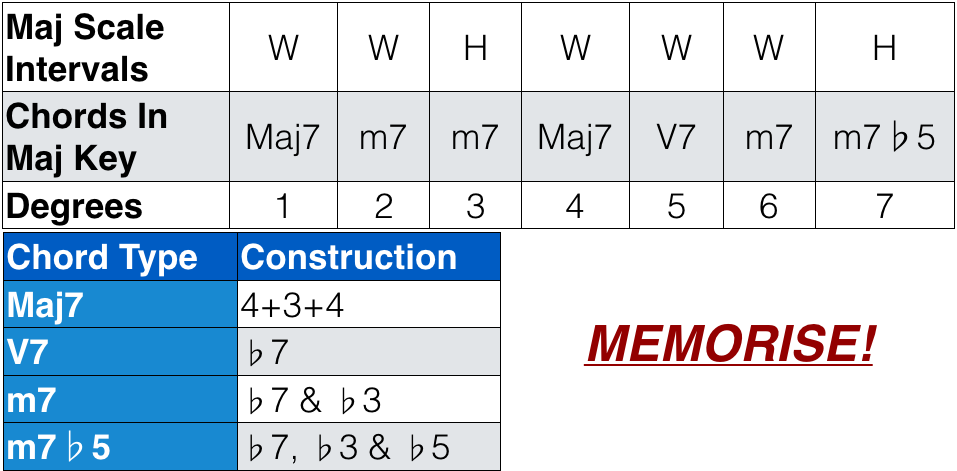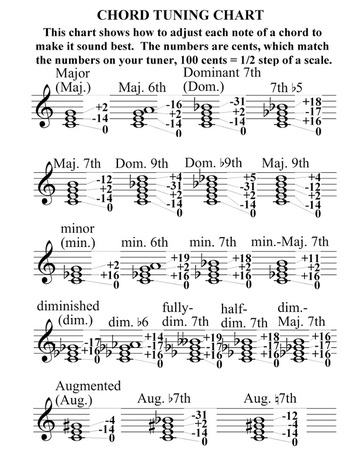Jazz Piano Theory is essential for any aspiring jazz pianist. It helps you understand the music deeply.
Understanding Jazz Piano Theory can transform your playing. Jazz piano is not just about hitting the right notes; it’s about feeling the music and expressing emotions through your fingers. This theory provides a foundation for improvisation, helping you create spontaneous, soulful melodies. With a structured approach, you can enhance your skills and enjoy playing more. The **Jazz Piano Step-by-Step Course** offers a comprehensive guide to mastering jazz piano. Start your 14-day free trial here and dive into the world of jazz piano with engaging, structured lessons. Enhance your understanding, improve your playing, and enjoy the journey of jazz piano.

Introduction To Jazz Piano Theory
Jazz piano theory is an essential aspect for any pianist looking to delve into the world of jazz. This foundational knowledge empowers musicians to understand and appreciate the complexities of jazz music. In this section, we will explore the basics of jazz piano theory, its importance, and how it can enhance your improvisation skills.
What Is Jazz Piano Theory?
Jazz piano theory involves understanding the unique elements of jazz music such as chords, scales, and rhythm. It focuses on the specific techniques used in jazz to create its distinct sound. This theory includes:
- Chords and Voicings: Learning different chord structures and how to voice them.
- Scales: Studying scales that are commonly used in jazz improvisation.
- Rhythm: Understanding jazz rhythms and how to apply them in playing.
Importance Of Understanding Jazz Theory For Improvisation
Understanding jazz theory is crucial for effective improvisation. It allows musicians to:
- Anticipate Notes: Knowing scales and chords helps in anticipating the next notes.
- Create Harmonies: Using theory knowledge to create harmonious and interesting improvisations.
- Enhance Creativity: A solid theory foundation boosts creativity and confidence.
Incorporating jazz theory into your practice routine enhances your skills and musical understanding. It bridges the gap between theoretical knowledge and practical playing techniques. The structured lessons in the Jazz Piano Step-by-Step Course are designed to integrate these elements seamlessly into your learning process.
This course offers:
| Main Features | Benefits |
|---|---|
| Structured Lessons | Skill Enhancement |
| Practice Guidance | Improved Music Understanding |
| Flexible Learning Pace | Motivating Structure |
| High-Quality Content | Comprehensive Learning |
Understanding jazz piano theory through this course can significantly impact your daily practice routines and enhance your overall jazz piano skills.

Key Concepts In Jazz Harmony
Jazz harmony is the foundation of jazz piano. Understanding these key concepts can transform your playing. Let’s dive into the essential components that make jazz harmony unique and captivating.
Understanding Chord Structures
Jazz chords are more complex than typical chords. They often include extra notes like the 7th, 9th, 11th, and 13th. Here’s a quick guide to the basic jazz chord structures:
| Chord Type | Notes Included |
|---|---|
| Major 7th | 1, 3, 5, 7 |
| Minor 7th | 1, b3, 5, b7 |
| Dominant 7th | 1, 3, 5, b7 |
| Half-Diminished 7th | 1, b3, b5, b7 |
These chords create the rich, full sound characteristic of jazz music. Practice them to get familiar with their unique sounds.
Exploring Common Jazz Chords And Progressions
Jazz is known for its unique chord progressions. Here are some common ones you will encounter:
- II-V-I Progression: This is the most common progression in jazz. It consists of a minor 7th chord, a dominant 7th chord, and a major 7th chord.
- Blues Progression: This progression uses dominant 7th chords and follows a 12-bar structure. It’s essential for any jazz musician to master.
- Minor II-V-I Progression: Similar to the II-V-I, but in a minor key. This progression uses minor 7th flat 5 and altered dominant chords.
Practicing these progressions will help you understand the flow of jazz music. It will also improve your ability to improvise over these changes.
The Jazz Piano Step-by-Step Course offers structured lessons to help you master these concepts. The course includes practice guidance and a flexible learning pace. It also provides high-quality content and regular updates to keep you engaged.
Start your journey today with a 14-day free trial. Visit Jazz Piano to learn more about the course and subscription options.
Scales And Modes In Jazz
Understanding scales and modes is crucial for mastering jazz piano. These elements provide the foundation for improvisation and chord progressions. Let’s delve into the major and minor scales, and explore the different jazz modes and their usage.
Major And Minor Scales In Jazz
The major and minor scales are the building blocks of jazz music. They form the basis of melodies and harmonies.
- Major Scales: The major scale consists of seven notes: C, D, E, F, G, A, B. It follows a specific pattern of whole and half steps (W-W-H-W-W-W-H).
- Minor Scales: The minor scale also consists of seven notes but has a different pattern. The natural minor scale follows W-H-W-W-H-W-W.
Both these scales are essential for creating jazz melodies and improvisations. Practicing these scales regularly will improve your finger agility and note accuracy.
Introduction To Jazz Modes And Their Usage
Jazz modes are variations of the major scale. They provide different tonal flavors and are used for improvisation and composition. There are seven modes in jazz:
- Ionian: Same as the major scale. Used for a bright, happy sound.
- Dorian: Starts on the second note of the major scale. Used for a minor, yet bright sound.
- Phrygian: Starts on the third note. Has a Spanish or Eastern sound.
- Lydian: Starts on the fourth note. Has a dreamy, floating quality.
- Mixolydian: Starts on the fifth note. Often used in blues and rock.
- Aeolian: Same as the natural minor scale. Used for a somber, reflective mood.
- Locrian: Starts on the seventh note. Has a tense, unresolved sound.
Each mode can be used to create different moods and colors in your music. Experimenting with these modes will expand your improvisational skills and enhance your musical expression.
Note: To learn more about jazz piano and improve your skills, consider enrolling in The Jazz Piano Step-by-Step Course. It offers structured lessons, practice guidance, and a flexible learning pace.
The Art Of Jazz Improvisation
Jazz improvisation is the heart and soul of jazz piano. It allows pianists to express their unique voice and creativity. Unlike classical music, which follows a strict structure, jazz thrives on spontaneity and personal interpretation. Let’s explore the essential elements that contribute to the art of jazz improvisation.
The Role Of Creativity In Jazz Improvisation
Creativity is the core of jazz improvisation. It involves thinking outside the box and playing with the musical elements in unexpected ways. Jazz pianists often use their imagination to create new melodies, harmonies, and rhythms on the spot.
| Element | Description |
|---|---|
| Melody | Creating new tunes by altering the original melody. |
| Harmony | Experimenting with different chords and progressions. |
| Rhythm | Playing with timing and syncopation to add complexity. |
Improvisation requires a deep understanding of jazz theory and a willingness to take risks. The more you experiment, the more you enhance your creative skills. The Jazz Piano Step-by-Step Course offers structured lessons to help you build a solid foundation. This foundation is crucial for developing creativity in your playing.
Techniques For Developing Improvisational Skills
Improving your improvisational skills takes practice and dedication. Here are some key techniques to help you:
- Listening: Listen to a wide range of jazz pianists. Notice how they improvise and incorporate their ideas.
- Transcribing: Transcribe solos from your favorite recordings. This helps you understand how professionals approach improvisation.
- Scales and Modes: Practice different scales and modes. This will expand your musical vocabulary.
- Chord Progressions: Experiment with various chord progressions to see how they fit into your improvisation.
- Practice Routines: Use practice logs to track your progress and set specific goals.
The Jazz Piano Step-by-Step Course provides practice guidance and a flexible learning pace. This ensures that you can practice these techniques effectively and at your own speed.
Remember, jazz improvisation is a journey. Each practice session brings you closer to mastering this beautiful art form.
Practical Exercises For Jazz Improvisation
Improvisation is a key component of jazz piano. Regular practice of specific exercises can greatly enhance your ability to improvise. Below are practical exercises to help you improve your jazz improvisation skills.
Chord Progression Practice
Practicing chord progressions is essential for jazz improvisation. Start with basic progressions and gradually move to more complex ones.
| Chord Progression | Description |
|---|---|
| ii-V-I | Common jazz progression, practice in all keys. |
| I-vi-ii-V | Standard progression, useful for many jazz standards. |
| iii-vi-ii-V | Longer progression, challenging but rewarding. |
Focus on smooth transitions between chords. Use different voicings and rhythms to vary your practice.
Improvisation Exercises And Drills
Improvisation drills help develop your creative skills. Begin with simple exercises and increase complexity as you improve.
- Scales Practice: Play scales in different keys. Use various rhythms and articulations.
- Arpeggios: Practice arpeggios over chord changes. This helps you understand the chord tones.
- Melodic Embellishment: Start with a simple melody and embellish it with passing tones and chromatic notes.
- Call and Response: Record yourself playing a phrase, then improvise a response. This helps develop musical conversation skills.
Consistency is key. Regular practice of these exercises will improve your ability to improvise on the piano.

Essential Listening: Influential Jazz Pianists
Jazz piano is a rich, expressive art form. Listening to influential jazz pianists can deepen your understanding and appreciation of jazz piano theory. Their unique styles and techniques offer valuable lessons for aspiring pianists. This section highlights key pianists and notable solos to study.
Learning From The Masters: Key Pianists To Study
Studying the works of legendary jazz pianists is crucial. Each artist brings a distinct voice and approach to the piano. Here are some essential pianists to explore:
- Thelonious Monk: Known for his unique improvisational style and complex rhythms.
- Bill Evans: Celebrated for his lyrical playing and sophisticated harmonies.
- Herbie Hancock: Blends jazz with funk and electronic music, pushing boundaries.
- Chick Corea: Renowned for his versatility and innovation in jazz fusion.
- Oscar Peterson: Master of technical prowess and swing feel.
Analyzing Famous Jazz Solos
Analyzing famous jazz solos can offer insights into jazz piano techniques and theory. Here are some iconic solos to study:
| Pianist | Solo | Key Techniques |
|---|---|---|
| Thelonious Monk | ‘Round Midnight | Unique phrasing, use of space |
| Bill Evans | Waltz for Debby | Advanced harmonies, lyrical lines |
| Herbie Hancock | Maiden Voyage | Modal improvisation, rhythmic complexity |
| Chick Corea | Spain | Fusion of jazz and Latin influences |
| Oscar Peterson | C-Jam Blues | Technical skill, swing feel |
By listening to and analyzing these solos, you can gain a deeper understanding of jazz piano techniques. Incorporate these lessons into your practice to enhance your own playing style.
Integrating Theory With Practice
The integration of theory and practice is crucial in mastering jazz piano. Understanding the foundational concepts is essential, but applying them in real-world playing solidifies learning. This approach bridges the gap between knowledge and performance, making you a more versatile musician.
Combining Theoretical Knowledge With Real-world Playing
The Jazz Piano Step-by-Step Course excels in combining theoretical knowledge with practical playing. The course offers structured lessons that are easy to follow. Each lesson includes practice guidance to help you apply what you’ve learned.
The course is designed to enhance your music understanding. You will learn to read, anticipate notes, and improvise effectively. These skills are essential in real-world playing. The high-quality content ensures you receive the best education possible.
| Theory | Practice |
|---|---|
| Understanding Chord Structures | Playing Chords in Progressions |
| Learning Scales | Using Scales in Improvisation |
| Reading Sheet Music | Performing Pieces from Sheet Music |
Tips For Continuous Improvement And Mastery
Continuous improvement is key in mastering jazz piano. Here are some tips to help you along the way:
- Practice Regularly: Make practice a part of your daily routine. Use the practice log to track your progress.
- Seek Feedback: Regularly review your playing. Listen to recordings of yourself and get feedback from teachers or peers.
- Stay Updated: Take advantage of the regular updates in the course. New lessons will keep you engaged and motivated.
- Improvise Often: Improvisation is a critical skill in jazz. Practice improvising over different chord progressions to enhance your creativity.
By following these tips and integrating theory with practice, you will see significant improvements in your jazz piano skills.
For more information on how to start your journey, visit The Jazz Piano Step-by-Step Course.
Conclusion And Further Resources
Jazz piano theory can be intricate, yet rewarding. Whether you are a novice or seasoned musician, enhancing your jazz piano skills requires dedication, the right resources, and a structured approach. Here, we summarize key takeaways and provide recommendations for further learning.
Summary Of Key Takeaways
- Structured lessons are crucial for effective learning.
- Practice guidance helps in tracking progress and staying motivated.
- Flexible learning pace allows for personalized learning experiences.
- Regular updates keep the content fresh and engaging.
- Comprehensive learning bridges theory with practical playing techniques.
Recommended Books, Courses, And Online Resources
| Resource Type | Title | Description | Link |
|---|---|---|---|
| Course | The Jazz Piano Step-by-Step Course | An online program with structured lessons, practice guidance, and flexible learning pace. | Enroll Here |
| Book | The Jazz Piano Book | Comprehensive guide on jazz piano techniques and theory by Mark Levine. | Buy on Amazon |
| Website | Jazz Piano Online | Offers various lessons, tips, and resources for jazz pianists. | Visit Website |
| Course | Jazz Piano for Beginners | Free online course providing foundational knowledge in jazz piano. | Take the Course |
Frequently Asked Questions
What Is Jazz Piano Theory?
Jazz piano theory involves understanding chords, scales, and improvisation techniques used in jazz music. It helps pianists create unique sounds.
How Do You Improvise On Jazz Piano?
Improvising on jazz piano involves using scales, chord progressions, and rhythmic patterns. Practice and experimentation are key.
What Are Jazz Piano Chords?
Jazz piano chords are complex and often include extended notes like 7ths, 9ths, and 13ths. They create rich harmonies.
Why Are Jazz Scales Important?
Jazz scales are crucial for improvisation and soloing. They provide the foundation for melody and harmony.
Conclusion
Jazz piano theory can enrich your musical journey. Understanding its concepts opens new possibilities. The Jazz Piano Step-by-Step Course offers structured lessons and practice guidance. This course suits both beginners and advanced players. Try the 14-day free trial to experience the benefits firsthand. Enhance your skills and enjoy learning at your own pace. Dive into the world of jazz piano today and see the difference.

I am a passionate digital marketer with a strong expertise in SEO and article writing. With years of experience in crafting compelling content and optimizing it for search engines, I help businesses enhance their online visibility and drive organic traffic. Whether it’s creating engaging blog posts or implementing effective SEO strategies, I am dedicated to delivering results that make an impact.
